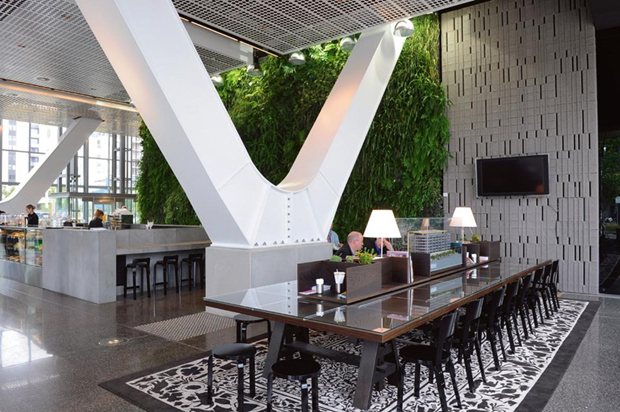Much of what we read or are instructed to do in pursuit of our greener future has probably become over regulated, overtly engineered and perhaps too publicly stated. I think we can all be a little numb about it sometimes, and when green becomes the marketeer’s byword or assignment of brand, it will lose its purpose. So what does it take to be green?
First you have to think green so that all of the tangible measures of sustainability that we experience are inherent in what we do. Our knowledge and education of histrionics, methodologies and ethics in supply and manufacture are fundamental to clear and concise thinking that has to come naturally.
Green has to be real. Our connection with the principles of sustainability and green should be personable; that is, how does it look, what does it feel like. Does ‘green’ have a tangible and tactile quality that makes you want to connect with it, does it evoke a personable quality that makes us want to live the philosophy.
I sometimes think the green wall is perhaps all too pervasive, too iconic when it comes to green stories, but the simple fact is the benefits are real and tangible. We can clean the air more effectively inside just as we do outside.
“If man is to move into closed environments, on earth or space, he must take along nature’s life support systems, plants.” – NASA’S Bill Wolverton.
It’s extraordinary I think that at the pinnacle of technological exploration Wolverton pioneered research into plants’ ability to clean air, finding that different plant species actually like particular chemicals and they can be neutralised.
Beyond materiality, the greatest challenge is to ensure there is heritage and quality behind the products and supply chain we choose, one that displays the tradition and spirit of long lasting service and durability.

The Gauge in Melbourne, interior designed by GroupGSA.
Furniture pieces, by example, are a real challenge in the contemporary context because the materiality in all its complexities is so evident in the use of metals, foam, paint and glues. As beautiful as iconic contemporaries are, it’s hard not to admire Thonet’s classic bentwood chair conceived in the 1850’s as a minimalist design; strong and durable, economical in use of materials, inexpensive to manufacture and ship to the user. All the principles we want to embrace now. As I write this I’m sitting on a chair that eschews all the qualities of heritage and principles that might underwrite our sustainability mantra; it’s 30 years old and still in production, a life cycle that will inevitably outlast my own.
So life cycle management, source, recyclability, embodied energy, emissions, even corporate responsibility, has to be fundamentally a part of your make up. Boomers are learning their mistakes; maybe a little late, but spending less, holding onto things more; perhaps some learning from their parental generation? Y’s are leading the evolution (or is that revolution) of change so they are set and the ‘nexters’ are educated from day dot, so life cycle management is well underway.
But rather than a revolution, our sustainable future simply requires a common sense approach every step of the way; human values in life style are why we endure.
Read about Five of Graeme Hadenham's Favourite building products here.

